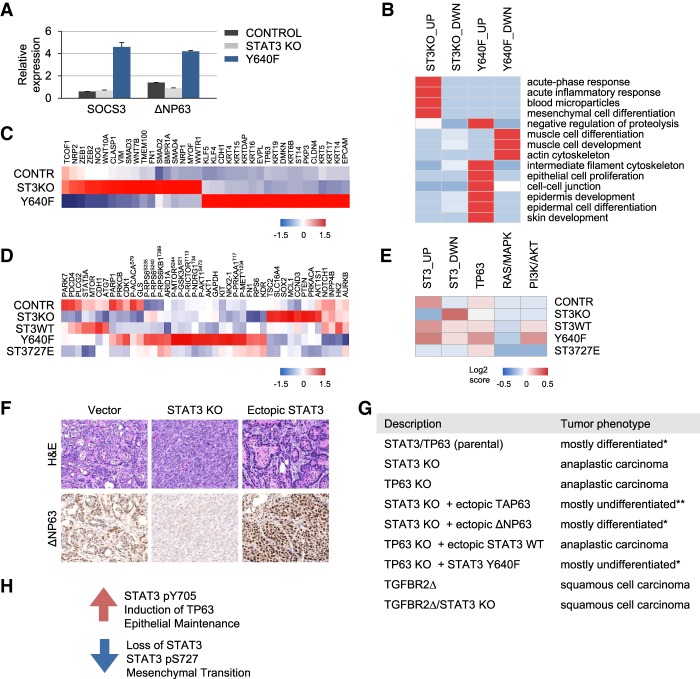Figure 5.
STAT3 and TP63 cooperatively regulate expression of epithelial-specific genes. (A) Quantitative RT–PCR of SOCS3 and ΔNP63 mRNA levels in control, STAT3 knockout, and STAT3 Y640F transduced KRASG12D p53 knockout lung epithelial cells. Relative expression levels are shown normalized to GAPDH. (B) Gene ontology analysis of control, STAT3 knockout-expressing, and STAT3 Y640F-expressing tumors derived from transcriptome analysis of KRASG12D p53 knockout lung epithelial cells. (C) Heat map of RNA sequencing (RNA-seq) data representing a subset of differentially expressed genes specifically involved in EMT and epithelial identity in control, STAT3 knockout-expressing, and STAT3 Y640F-expressing tumors derived from KRASG12D p53 knockout lung epithelial cells. (D) Heat maps of RPPA data representing differentially expressed proteins in KRASG12D p53 knockout lung epithelial cells and their STAT3 derivatives. (E) Signaling perturbations in KRAS-related pathways derived from RPPA analysis by loss or gain of STAT3 function in KRASG12D p53 knockout lung epithelial cells. (F) H&E and IHC (ΔNP63) of tumors derived from fully formed murine lung ADC tumor cells following their culture and modification to express STAT3 knockout or ectopic wild-type STAT3. (G) Histological features of tumors arising from KRASG12D lung epithelial cells with STAT3, TP63, and TGFBR2 genotypes. (*) Mixed epithelial–mesenchymal tumor phenotype consisting of ≤10% mesenchymal component. (**) Mixed epithelial–mesenchymal tumor phenotype consisting of ≤10% epithelial component. (H) Model representing the mechanism by which STAT3 and TP63 regulate epithelial cell commitment and differentiation in KRAS-driven carcinogenesis.

